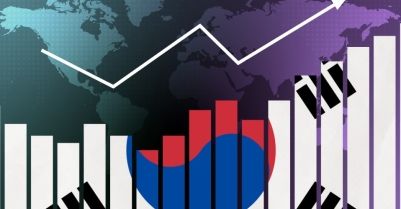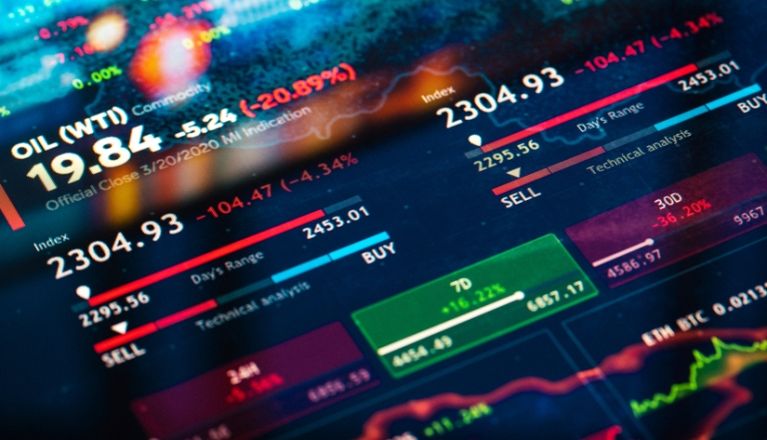-
View article
 #Economy
#EconomySouth Korea: a year after the political crisis, markets are buying the promise of stability
2025/12/17
A short-lived upturn? Sketching out 2021
Outlining the 2021 growth scenario is a particularly tricky exercise: contrary to what we assumed in our September scenario (1), the pandemic has taken off and we are once again faced with the question of how to manage lockdown, be it full-scale or “light”.

Several – though not all – European countries have adopted a strategy of clamping down hard and fast. For the moment, the varying timing and magnitude of the second wave have prompted some countries to adopt less economically damaging strategies and even to vary their approach regionally. The “hit hard and hit fast” strategy adopted by the French Government is the one recommended by France’s Conseil Scientifique (Scientific Council) in its last report, dated 26 October (2).
The growth profile in the final part of this year and throughout next year will be heavily dependent on how the pandemic unfolds (3) and what measures are adopted to contain it. In this environment, the scenario must be calibrated using scientifically plausible public health assumptions and actions on mobility and economic activity that are consistent with those assumptions. The latest report by the Conseil Scientifique is thus a helpful guide for mapping out the public health backdrop against which public decision-making will take place and economic activity unfold over the coming months.
Medical science in service of the economy
The public health assumptions and mobility options presented in the report are couched in a high degree of uncertainty, with the former heavily dependent on the success of the latter. This endogeneity makes this public health equation – whose large number of random variables (virus characteristics, individual behaviours, etc.) already include a very high degree of freedom – even harder to solve. According to the Conseil Scientifique, “it is very difficult to predict how long the second wave will last, since this depends on the virus itself, the climate within which it circulates, measures adopted to limit its circulation and how widely those measures are accepted, and thus their impact. We can hypothesise that the second wave might conclude at the end of this year or in early 2021.”
According to the Conseil Scientifique, then, the most plausible scenario is that “the recently announced four-week lockdown (which could be extended into December) would be followed – depending on the results achieved – by a public health curfew running until early January 2021, which would enable some economic and social activity to continue, limiting the epidemic’s deleterious effects”.
The stated goal of the public health authorities is for circulation of the virus to return to a very controlled level (a maximum of 5,000-8,000 new cases a day, representing a huge reduction in the number of new cases). It is entirely plausible that the spread of the virus could take longer to curb than it did last spring, with “lockdown light” still allowing significant freedom of movement. Managing the situation on the basis of numerical targets would allow for an aggressive “test, trace and isolate” strategy with a greater chance of success. The lockdown would also help buy time and learn lessons from the relative failure of this strategy during summer 2020.
Momentum, interrupted
The final quarter of 2020 will thus be characterised by negative growth. However, the large amount of economic activity spared by “lockdown light” will help reduce the adverse effects on growth relative to the second quarter of 2020. The gradual change in consumption and selling behaviours in the retail sector also mean people should be quicker to adapt to new restrictions on mobility, which should therefore have less of an adverse effect on consumer spending. However, the recovery that looks set to take shape when lockdown ends in the first quarter of 2021 could be more moderate than its summer 2020 forerunner due to both longer-lasting social distancing measures and self-imposed restrictions on mobility.
In that case, the end 2020 carry-over effect on 2021 growth would be fairly weak. Bumpy growth will build on this weak carry-over at least throughout the first half of 2021.
The Conseil Scientifique warns, “It is likely that these measures [an aggressive “test, trace and isolate” strategy], even if optimised, will not be sufficient to avoid further waves after the second one. We could thus see a number of successive waves over late winter/spring 2021, depending on a range of factors including the weather and the level and operational efficiency of the “test, trace and isolate” strategy. It will be many months before population immunity reaches a significant enough level to begin to slow circulation of the virus within the general population. […] Furthermore, we do not know exactly how long (six months? longer?) those who have already had COVID will retain some protective immunity.”.
Circuit-breakers and growth profile
The first half of next year is thus likely to be characterised by further decisions about how to manage “successive waves of resurgence […] until the arrival of the first vaccines and/or prophylactic treatments (second quarter of 2021?)”. The Conseil Scientifique goes on to recommend two strategies: “an ‘on/off’ strategy with successive restrictions, varying by region and for limited periods, interspersed with more ‘liberal’ measures”; and an alternative strategy that “would consist, once circulation of the virus is back under control (5,000 new cases a day), of keeping the spread of the virus below this threshold”, with “strong, early measures each time the epidemic picks up”.
These measures, as well as very cautious behaviour on the part of a population that has realised the pandemic is not going to disappear any time soon, imply a very modest rate of growth over the first half of 2021. The recovery will also be limited by households keeping hold of some their accumulated savings for precautionary purposes. Uncertainty as to how long it will take to bring the pandemic under control will affect spending decisions, whether for investment or consumption.
More visibility on medical progress would help dispel these uncertainties and improve the economic climate in the second half of 2021.
This scenario implies fresh support measures from national fiscal authorities in the likely absence of additional stimulus by European authorities before summer 2021, even allowing for the possibility that a portion of planned European Recovery Fund spending might be redirected from investing in the future into providing more immediate economic support. These national efforts could fuel increased discrimination towards sovereigns that carry more debt or have been hit harder by the second wave. Through its presence in the sovereign debt market, the ECB will be working to limit the impact of such discrimination on financing conditions for eurozone member states and curbing the risk of financial instability in the sovereign debt market.
Paola Monperrus-Veroni
Paola.monperrus-veroni@credit-agricole-sa.fr
[1] See “World – 2020-2021 macroeconomic scenario: all are equal, but some are more equal than others...“ – 2 October 2020.
[2] A second wave bringing about a critical public health situation: https://solidarites-sante.gouv.fr/IMG/pdf/note_conseil_scientifique_26_octobre_2020.pdf.
[3] See “World – Weekly news, 30 October 2020, “What learning to live with COVID-19 means for the growth scenario”.








